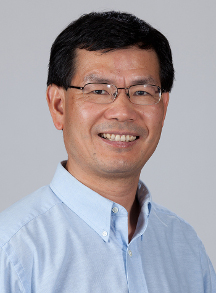Blueprints for anti-cancer drugs discovered in bacterial genomes
By Madeline McCurry-Schmidt
Scientists on the Florida campus of The Scripps Research Institute (TSRI), who had previously discovered the prostate cancer-killing compound LNM E1, have now brought the family of LNM molecules even closer to clinical testing by “mining” the information stored in bacteria genomes. Their research suggests these hidden genes hold the blueprints for designing new, even more effective cancer-targeting compounds.
“This points the way toward a new therapeutic opportunity,” says lead investigator Ben Shen, PhD, TSRI professor and co-chair of the Department of Chemistry.
The findings were published recently in the journal Proceedings of the National Academy of Sciences USA.
Unlocking anti-tumor molecules in nature
The leinamycin (LNM) family is a group of compounds called natural products, produced by a bacterium that lives in soil. Until now, Shen and his colleagues were only aware of one member of the LNM family, a compound called LNM. By editing the genome of the bacterium, the Shen lab produced LNM E1, which they showed in 2015 could react with reactive oxygen species in prostate cancer cells, triggering death.
“So we knew the molecule was useful, but then what? We needed to make many variants to optimize efficacy in animal models,” says Shen.
Unfortunately, synthesizing LNM E1 to make analogues has proven challenging because of the compound’s complicated structure.
The lack of analogues led Shen and his colleagues to look to nature for help. Luckily, researchers have a valuable resource on TSRI’s Florida campus, where Shen heads the Natural Products Library Initiative, a library consisting of purified natural products, partially pure fractions, crude extracts and bacterial strains collected from all over the globe that are available for screening.
By combing through this library and public datasets, the team discovered 49 bacteria with genes that appear to code for members of the LNM family. The researchers confirmed this finding through bioinformatics analysis and by isolating several of the newly discovered LNM compounds in the lab.
With this research, Shen and his colleagues now have an idea of the structural diversity in LNMs. They found that while bacteria evolved to have LNMs with many of the same characteristics, small changes, such as atomic differences in the building blocks of their core scaffolds, could make some LNMs more or less effective against cancer cells. The next step will be to study LMN molecule interactions with cancer cells to find out.
This finding represents a big shift in how scientists discover natural product drug candidates. Shen explained that for a long time, scientists had to cast a wide net to discover potential medicinal compounds, more or less by chance, in animals, plants, bacteria and fungi. With the more focused, genome-driven technique employed at TSRI, scientists can close in on suspected sources of a potential drug more efficiently, in this case, mining bacteria genomes to find the instructions for making LNMs.
“The technological advances we’ve made enable us to quickly identify sources of these types of natural products,” says Shen. “This could dramatically impact the drug lead pipeline.”
Research Associates Guohui Pan and Zhengren Xu of The Scripps Research Institute served as co-first authors of the study “Discovery of the Leinamycin Family of Natural Products by Mining Actinobacterial Genomes,” which also included authors from Ghent University, Belgium; Central South University and Yunnan University, China; and Myongji University, Korea.
The study was supported by the Chinese Ministry of Education 111 Project B08034, National High Technology Joint Research Program of China (grant 2011ZX09401-001), and National High Technology Research and Development Program of China (grant 2012AA02A705); the Cooperative Research Program for Agriculture Science & Technology Development, Rural Development Administration, Korea (Project No. PJ01128901); and the National Institutes of Health (grant CA106150).
Send comments to: press[at]scripps.edu














